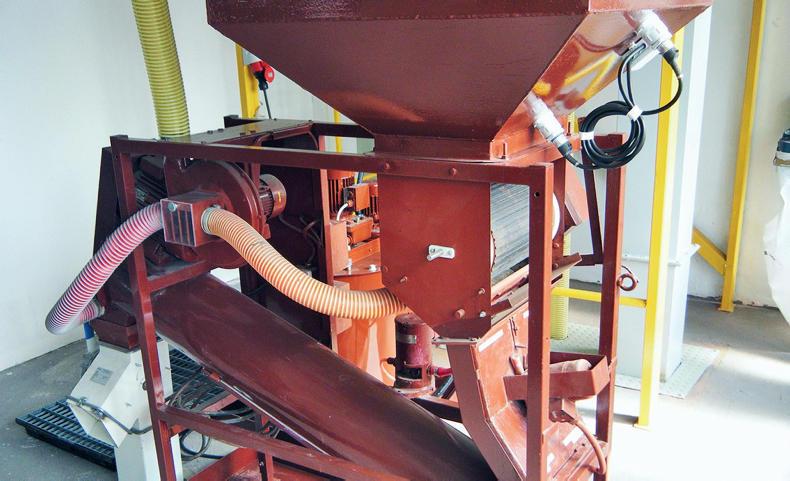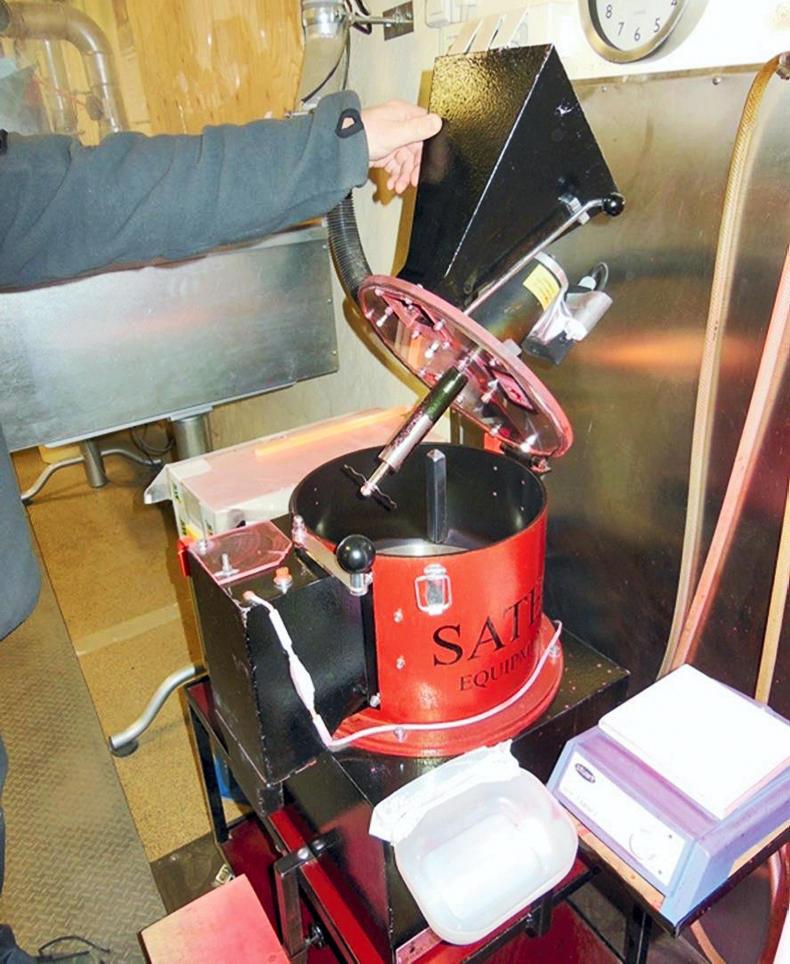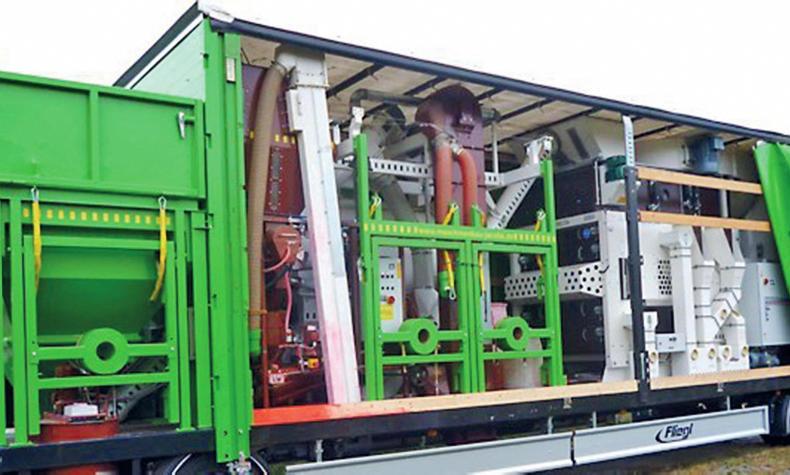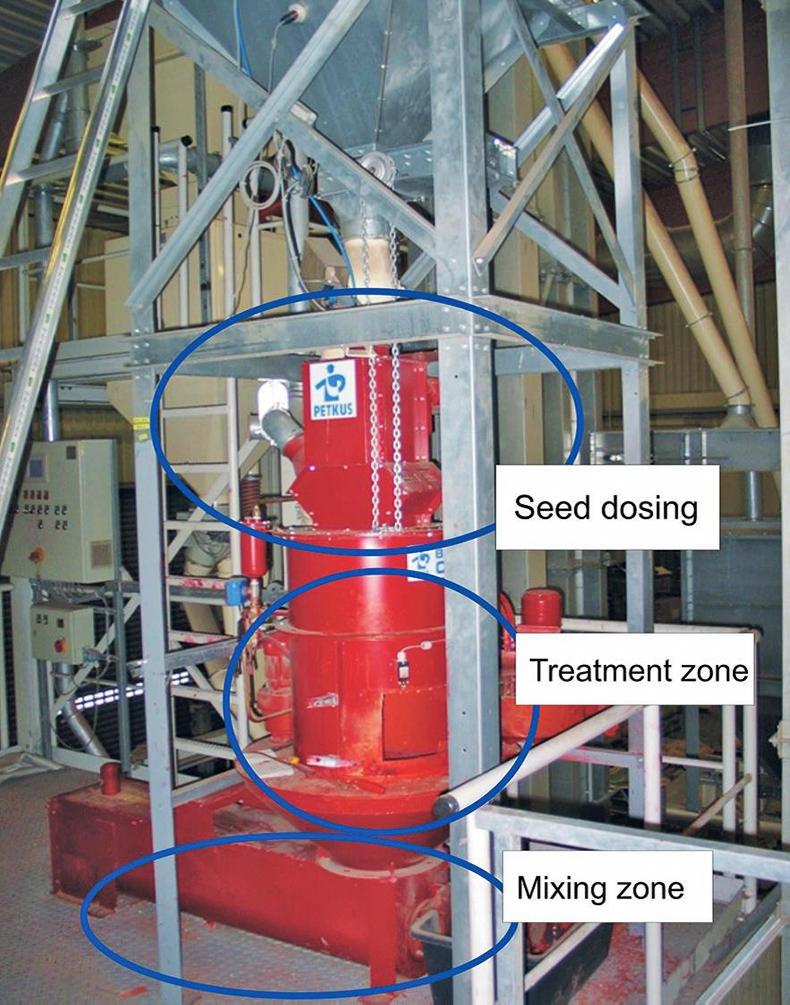The treatment of seed is one of the most cost-effective plant disease control methods. Relatively small volumes of plant material are handled, and in principle every seed is treated.
Seed treatments can prevent the need for the use of additional plant protection products which may be a more environmentally friendly way of using pesticides.
However, treated seed should be handled with care and seed application equipment must be capable of applying an even coating of pesticide at the correct label rates.

All components of the equipment will be thoroughly inspected.
Failure to do so can result in poor dressing-to-seed coverage, exceeding of the label rates on a proportion of the seed, and the creation of dust. For that reason, seed treatment equipment falls under the remit of the Sustainable Use of Pesticides Directive (SUD).
In 2019, the European Commission audit on the implementation of the SUD found Ireland was not fully compliant with the EU requirement to have all pesticide application equipment inspected.
In addition to sprayers over 3m in boom width, all weed wipers, granular applicators, boom sprayers under 3m in width, fixed sprayers, fogging equipment and seed treatment applicators must now be tested.
While the original date for the initial testing of these additional types of pesticide application equipment was 31 December 2020, it is now likely that this will be delayed until December 2021.

Batch treatment equipment will also be tested.
Seed treatment applicators
Seed treatment applicators come in all shapes and sizes. The Department of Agriculture maintains a register of seed dressing specialists. Regardless of whether they are batch, continuous, mobile or fixed, if they are over three years of age then they must be tested by next year.

Mobile seed dressers must be tested next year.
The standards for testing seed treatment applicators are based on the Standardised Procedure for the Inspection of Sprayers in Europe (SPISE) advice.
Existing equipment inspectors who complete supplementary modules on the specific requirements for the new equipment will be able to carry out the tests.
The inspection will comprise a number of stages and examine all components. Before the inspection takes place, operators must ensure that the equipment is cleaned and that all moving parts driven by mechanical, hydraulic or electrical means are protected (PTO covering, etc).

All components of the equipment will be thoroughly inspected.
What will they inspect?
Leaks: For spraying equipment equipped with a tank or mixing container, the tank will be filled to nominal capacity and inspected for leaks. There should be no leakage from any part of the machine (tank, pump and associated pipes or lines, etc) when the pump is and isn’t running. Pumps: The pump capacity should be suited to the needs of the equipment. If an air chamber is present, the air pressure shall be the pressure recommended by the equipment manufacturer or from 30% to 70% of the working pressure.Spray mix agitation: When the agitation system is working, this must be visible. The tank or mixing container will be filled to half its nominal capacity when testing this. Mixing tank or tank for spray liquid: There needs to be a pressure compensation device to avoid over-pressure and under-pressure in the tank. If present, the tank needs to be provided with a lid that shall be well-adapted and in good condition, free of deformations, holes etc. Cleaning: If present, the cleaning device for plant protection product containers must work properly.Measuring systems, controls and regulation systems: All controls need to work reliably. They should be able to be operated from the operator’s position. Instrument displays must also be readable. All devices for adjusting pressure or flow need to maintain a constant pressure or flow with a tolerance of 10%. Pressure or flow shall return to the original working pressure or flow after the equipment has been switched off and on again.

Equipment capable of treating any type of seed will be tested.
Lines: Hoses should not show excessive bending and abrasion through contact with surrounding surfaces.Filters: Filter(s) should be in good condition and the mesh size shall correspond to the nozzles fitted, according to the instructions of nozzle manufacturers.Nozzles/atomisers: After being switched off, there must not be any continuous dripping after the liquid flow has been shut off. The deviation of the flow rate of each nozzle shall not exceed 10% of the nominal flow rate at the working pressure.Other electronic devices: When provided, these must work properly. Examples of this equipment are level indicators, level control, level switches, flow control and flow switches.
The treatment of seed is one of the most cost-effective plant disease control methods. Relatively small volumes of plant material are handled, and in principle every seed is treated.
Seed treatments can prevent the need for the use of additional plant protection products which may be a more environmentally friendly way of using pesticides.
However, treated seed should be handled with care and seed application equipment must be capable of applying an even coating of pesticide at the correct label rates.

All components of the equipment will be thoroughly inspected.
Failure to do so can result in poor dressing-to-seed coverage, exceeding of the label rates on a proportion of the seed, and the creation of dust. For that reason, seed treatment equipment falls under the remit of the Sustainable Use of Pesticides Directive (SUD).
In 2019, the European Commission audit on the implementation of the SUD found Ireland was not fully compliant with the EU requirement to have all pesticide application equipment inspected.
In addition to sprayers over 3m in boom width, all weed wipers, granular applicators, boom sprayers under 3m in width, fixed sprayers, fogging equipment and seed treatment applicators must now be tested.
While the original date for the initial testing of these additional types of pesticide application equipment was 31 December 2020, it is now likely that this will be delayed until December 2021.

Batch treatment equipment will also be tested.
Seed treatment applicators
Seed treatment applicators come in all shapes and sizes. The Department of Agriculture maintains a register of seed dressing specialists. Regardless of whether they are batch, continuous, mobile or fixed, if they are over three years of age then they must be tested by next year.

Mobile seed dressers must be tested next year.
The standards for testing seed treatment applicators are based on the Standardised Procedure for the Inspection of Sprayers in Europe (SPISE) advice.
Existing equipment inspectors who complete supplementary modules on the specific requirements for the new equipment will be able to carry out the tests.
The inspection will comprise a number of stages and examine all components. Before the inspection takes place, operators must ensure that the equipment is cleaned and that all moving parts driven by mechanical, hydraulic or electrical means are protected (PTO covering, etc).

All components of the equipment will be thoroughly inspected.
What will they inspect?
Leaks: For spraying equipment equipped with a tank or mixing container, the tank will be filled to nominal capacity and inspected for leaks. There should be no leakage from any part of the machine (tank, pump and associated pipes or lines, etc) when the pump is and isn’t running. Pumps: The pump capacity should be suited to the needs of the equipment. If an air chamber is present, the air pressure shall be the pressure recommended by the equipment manufacturer or from 30% to 70% of the working pressure.Spray mix agitation: When the agitation system is working, this must be visible. The tank or mixing container will be filled to half its nominal capacity when testing this. Mixing tank or tank for spray liquid: There needs to be a pressure compensation device to avoid over-pressure and under-pressure in the tank. If present, the tank needs to be provided with a lid that shall be well-adapted and in good condition, free of deformations, holes etc. Cleaning: If present, the cleaning device for plant protection product containers must work properly.Measuring systems, controls and regulation systems: All controls need to work reliably. They should be able to be operated from the operator’s position. Instrument displays must also be readable. All devices for adjusting pressure or flow need to maintain a constant pressure or flow with a tolerance of 10%. Pressure or flow shall return to the original working pressure or flow after the equipment has been switched off and on again.

Equipment capable of treating any type of seed will be tested.
Lines: Hoses should not show excessive bending and abrasion through contact with surrounding surfaces.Filters: Filter(s) should be in good condition and the mesh size shall correspond to the nozzles fitted, according to the instructions of nozzle manufacturers.Nozzles/atomisers: After being switched off, there must not be any continuous dripping after the liquid flow has been shut off. The deviation of the flow rate of each nozzle shall not exceed 10% of the nominal flow rate at the working pressure.Other electronic devices: When provided, these must work properly. Examples of this equipment are level indicators, level control, level switches, flow control and flow switches. 










 This is a subscriber-only article
This is a subscriber-only article










SHARING OPTIONS: